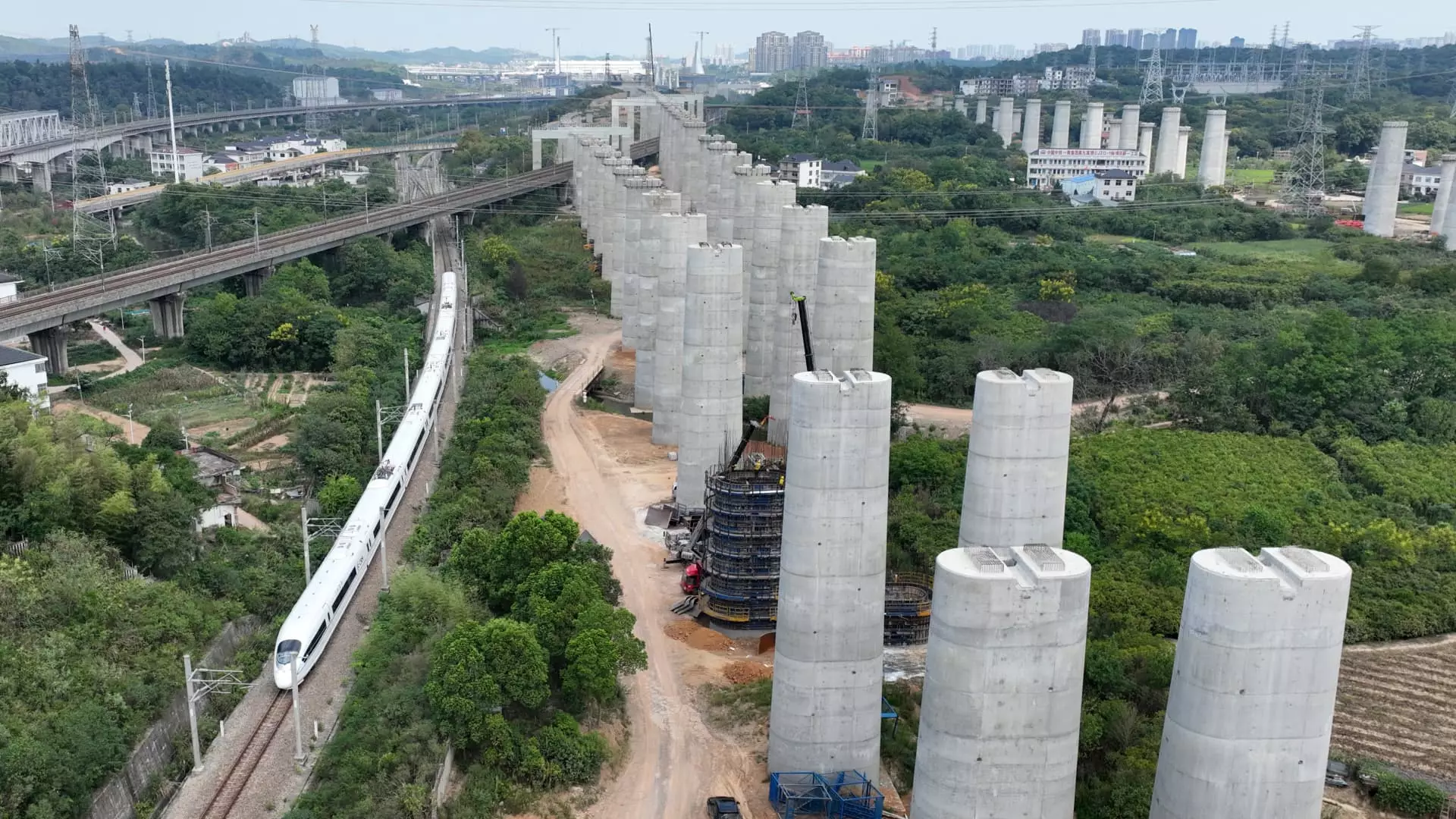China’s economic stability is currently grappling with substantial challenges, primarily stemming from a long-developing real estate crisis. Over the past two decades, a significant portion of Chinese household wealth was invested in real estate, rendering it a cornerstone of financial security for many families. However, a drastic shift unfolded when China’s government began implementing reforms in 2020 aimed at curbing developers’ excessive reliance on debt. This intervention, while necessary to prevent financial recklessness, has led to an unprecedented decline in property values, risking a domino effect on various sectors of the economy, particularly local government finances, which are closely tied to land sales and real estate revenue.
The implications of this decline cannot be overstated. As property prices fall, developers are scaling back land purchases, which in turn drastically reduces the revenue that local governments rely upon, especially at the district and county levels. Analysts at S&P Global Ratings predict a challenging recovery trajectory, estimating that it will take three to five years for these local financial systems to return to a sustainable state. Such forecasts indicate that the path toward fiscal recovery could be perilously long, marked by increasing debt levels as government revenues continue to falter.
Local authorities across China are feeling the pressure, a situation compounded by cuts in taxes and fees since 2018, which have resulted in an average revenue decline of 10%. The urgency of recovering lost revenue is palpable; local governments are resorting to recalling old tax debts, dating as far back as 1994, in an attempt to shore up their financial position. Businesses have found themselves surprised by sudden tax demands, with amounts owed varying dramatically. Reports indicate cases involving companies across several economically robust provinces, revealing the depths of governmental desperation for liquidity.
For example, NingBo BoHui Chemical Technology was recently ordered to repay significant sums due to shifting classifications in their product categorization, illustrating the unpredictable nature of these retroactive assessments. Such actions signal not only the need for enhanced transparency but also the pressing need for local governments to identify alternative revenue streams as traditional sources dwindle.
The impact of local government financial stress is trickling down to the broader consumer base. A hesitant business environment, compounded by increased tax scrutiny and rising operational costs, has left many companies reluctant to hire new employees or offer wage increases. This hesitation contributes to a cycle of uncertainty among consumers regarding their financial future – a crucial element for consumption-driven economic recovery.
Indicators such as the CKGSB Business Conditions Index, which suggests stagnation in business climate, highlight the precarious situation. The index’s downturn in recent months signifies that confidence in economic expansion is fragile at best. Retail sales remain tepid, and projected growth rates indicate that recovery from previous lows is slow – a sign that the effects of the ongoing economic stress are being felt widely across sectors.
The Shift in Policy Paradigms
The Chinese government acknowledges these deeply entrenched issues. However, efforts to pivot from an investment-focused growth model to one driven by consumer spending remain fraught with challenges. Analysts assert that while bolstering revenue through growth is essential, the rigid state-controlled economic framework complicates shifts in policy focus. Historical precedents from previous debt reduction efforts, notably between 2012 and 2016, reveal a pattern of subdued economic growth linked to deleveraging policies, an outcome which could re-emerge if current strategies are maintained.
Morgan Stanley economists have highlighted how escalating debt-to-GDP ratios – projected to hit an alarming 312% by year-end – mirror worrying trends seen in prior cycles of economic tightening. The urgency surrounding the fiscal landscape is compounded by the complex relationships between local governments and various debt-encumbered business entities, known as local government financing vehicles (LGFVs). These entities are entangled in a web of obligations, primarily funding public infrastructure projects, yet yielding limited financial returns, amplifying the risks faced by banks and the financial system.
With local governments caught in a vicious cycle of revenue challenges and increasing debt levels, the outlook for China’s economy hangs in the balance. Analysts and financial experts emphasize the need for the government to adopt innovative strategies for generating revenue while simultaneously addressing the liquidity challenges that threaten overall financial stability. As authorities seek to balance economic growth with prudential financial management, the enduring question remains: can a sustainable path toward recovery be carved out amid such intricate economic turbulence, or will the momentum towards growth remain stymied by heavy debts and faltering consumer confidence? Understanding this complex landscape will be crucial for assessing not only China’s economic future but also its broader implications on global markets.

